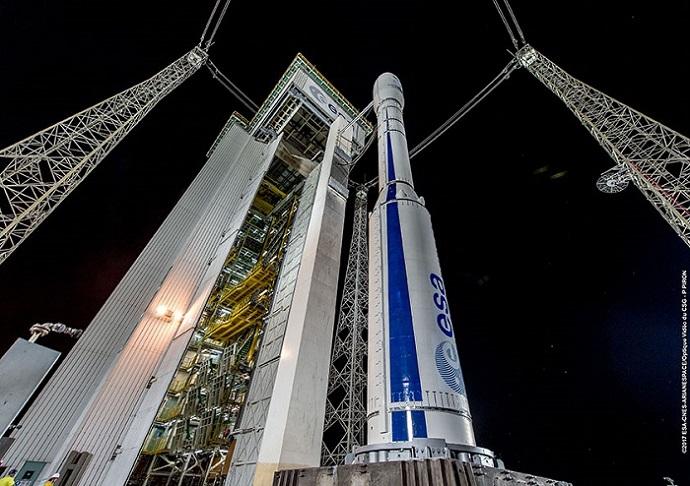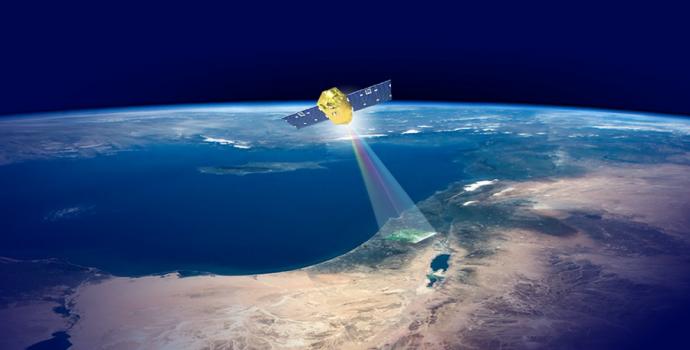After seven years in orbit, the vegetation and environmental monitoring satellite, Venus (VENμS), was retired on Wednesday and will begin making its way back to Earth to burn up in the atmosphere. The satellite, which is a joint effort of the Israeli and French space agencies, has proven its effectiveness in various scientific studies thanks to its high-resolution spatial imaging capabilities, dedicated wavelengths, and frequent re-imaging of specific sites.
The Venus satellite was originally designed to be a demonstration system for Sentinel-2 satellites, as part of the European Copernicus program for remote sensing satellites. However, due to technical delays, Venus was launched on August 2, 2017, after these satellites. However, it was able to differentiate itself by focusing on about 150 targeted research sites around the world. The spatial resolution and high reflection time (up to once a day) of the satellite have enabled various unique applications related to study of soil, water reservoirs and the atmosphere.
"The Venus satellite, which operated in space almost twice as long as was originally planned, is an example of outstanding international cooperation with the French Space Agency, as well as Israeli innovation in the field of environmental satellites in particular," says Brig. Gen. (Res.) Uri Oron, Director General of the Israel Space Agency at the Ministry of Innovation, Science and Technology. "After seven years, Venus has met its technological and scientific goals exceptionally well, serving as a platform for research around the world. The Israel Space Agency continues to operate and initiate joint ventures with the world's leading space agencies, with the intention of placing Israel at the forefront of research and industry in the field of space."
The Venus satellite, the size of a home refrigerator and weighing 270 kilograms, is mainly a product of the Israeli space industry: Israel Aerospace Industries is responsible for the development of the satellite systems and the ground station, the electric propulsion system was developed at Rafael Advanced Defense Systems, while France is responsible for the development of the multispectral camera and image processing system. The French Space Agency was responsible for developing the satellite's camera, but it should be noted that the company that won the French tender and actually developed the camera was also an Israeli company: Elbit Electro-Op Systems.

A technological, scientific and educational success story
The Venus mission had two main goals. The technological goal was to test an electric propulsion engine, which allowed the satellite to operate in space for a significantly longer period of time, in comparison to the operating times of fuel engines. The jet-emitting engine of xenon ions made orbital adjustments and maintained an altitude of 400 km to overcome atmospheric drag.
The second goal of the satellite was scientific: to take high-quality high-resolution images (4-5 meters) and frequently (once every day or two) of about 150 selected sites in 12 spectral bands. Throughout its operational life, Venus has undergone several orbital changes to achieve these goals. These different altitudes led to different spatial resolutions, further enhancing the satellite's data-gathering capabilities.
The satellite was used by researchers around the world and provided data for joint studies by Israeli scientists and their colleagues from other countries, with the goal of advancing solutions to environmental and climate challenges. In addition, in Israel alone, researchers from various academic institutions downloaded tens of thousands of Venus images that were used in various studies in the fields of agriculture, forestry, iconography, and atmosphere. The Venus data contributed to the publication of more than 100 scientific papers, most of which were written by Israeli researchers.
At the same time, Venus also played a part in promoting space education in Israel. Lesson plans based on its abilities were taught in junior high schools across the country and in the SHE-SPACE research program; students from the south of the country developed research applications in the agricultural and ecological fields, based on the data from Venus. This program also presented with an award of excellence by the International Astronautical Federation (IAF).
Now, in accordance with the International Outer Space Treaty, it is necessary to direct Venus safely back to Earth in order to minimize the risks of damage to other active satellites operating in the same orbit. As part of this process, all of the satellite's fuel will be used up before it gradually descends towards Earth, until it is finally decayed during friction with the atmosphere.











